Day after day, Artlab organizers put brilliant, passionate people who are at the forefront of climate change research and activism in front of us. Scientists, activists and artists nudged together again.
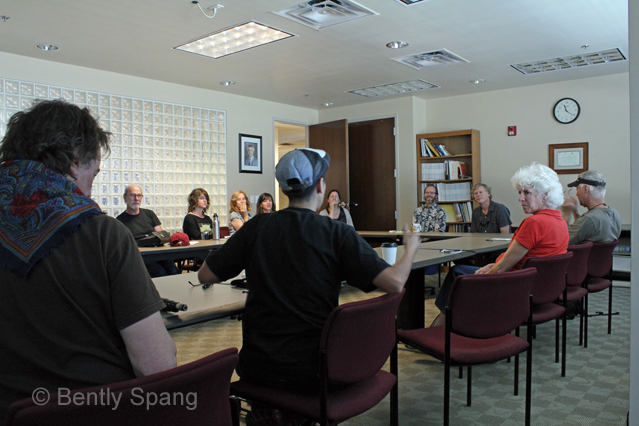
Meeting with Johnathan Overpeck and Gregg Garfin, Institute of the Environment, University of Arizona.
In a weeks time, we hurtled from one remarkable destination to another: Biosphere 2 in all it’s magnificently manufactured glory, a sci-fi-esque experiment from the 90s that has become an international leader in climate change research, the Ceunca los Ojos project nestled in the Arizona mountains and hosted graciously by Valer Austin, across the border to Mexico with Valer to view the rest of Cuenca los Ojos’ incredible work revitalizing the ravaged landscape and restoring the water table, all the while fueled by Phillipe’s incredible cuisine. This journey-to-the-center-of-the-earth format created a powerful camaraderie amongst the artists, our hosts and the scientists/activists/presenters, a camaraderie that still resonates or me today.
What this group eventually became had a direct bearing on the nature and intensity of the experiences I had on this trip. In the beginning, I was curious what sort of group dynamic would emerge among the assembled artists. I have found that, in short-term projects like this, groups can easily fly apart or polarize under the pressure of intense travel and information overload. I’m happy to say that this group thrived on the pressure, and actually grew closer and more cohesive as the project went on. And it was this camaraderie, the diversity, and the passion of the assembled group of artists and our hosts, coupled with our gifted presenters, that created for me a perfect storm of highly charged moments of learning and group absorption of knowledge that are still impacting me today; kudos to the organizers for their vision and tenacity in bringing together this amazing group.
With each landscape we entered I found myself returning to my reservation homeland in Montana, the dramatic badlands landscape that sustains me and drives my work. This place in southeastern Montana is my reference point for the rest of world and all other landscapes are run through its filter. It resides at my core and at the core of my people the Tsistsistas Nation as we call ourselves (or Northern Cheyenne as we have been called). My relatives in the past endured incredible hardships and even gave their lives so we would have this homeland
This place is My Forest not The Forest. It is a specific place on the earth that my people have known in great detail for centuries, not the generic space of bureaucratic fantasy referred to loosely as The Forest (I believe each of us has a My Forest, one with deep personal meaning). And, Indigenous scientists/practicioners have engaged (and continue to engage) their forests all across this continent and around the world and have done so for centuries, compiling data, recording observations, proving theories and handing that information on to subsequent generations.
My Forest is a place I have come to know as personally as a family member during the course of my life. I have walked on it, crawled across it, ridden horseback over it, harvested plants and animals from it, and buried loved ones within it, just as did countless generations of my people. My earliest memories are of digging roots, picking berries and hunting deer on this land with my family. The outings, disguised as family picnics, were really ‘Tsistsistas University’ classes with my grandparents and other relatives and elders (the professors) teaching us the details of this place and our history on this land. Their curriculum was handed on from centuries ago and was designed to be taught at any given moment during the day: all day, everyday.
My Forest, like so many others, is also an embattled space. My people have fought for years, and continue to fight, to keep coal development off our reservation. Hundreds of years ago, our prophet Sweet Medicine predicted that one day crazy people would come to the Tsistsistas people and ask us to dig into our homeland with them, and if we did so we would go crazy too and cease to exist as a people. This prophecy has come true and today we know that one of the largest coal reserves in the world sits under our reservation and we have spent decades chasing away the crazy people: the coal companies and the federal and state government officials, who salivate over our rare and highly-prized, low-sulphur content, low-overburden coal.
It’s little help that our reservation is situated in an area the federal government has designated a ‘National Sacrifice Area,’ essentially all of eastern Montana. A deceptively poetic phrase, in reality ‘National Sacrifice Area’ means that the restrictions on the extraction of minerals are greatly reduced. Unfortunately eastern Montana is a place that fails to generate the tourism-based tax revenue of mountainous western Montana and so has been offered up for sacrifice to the strip miners shovel.
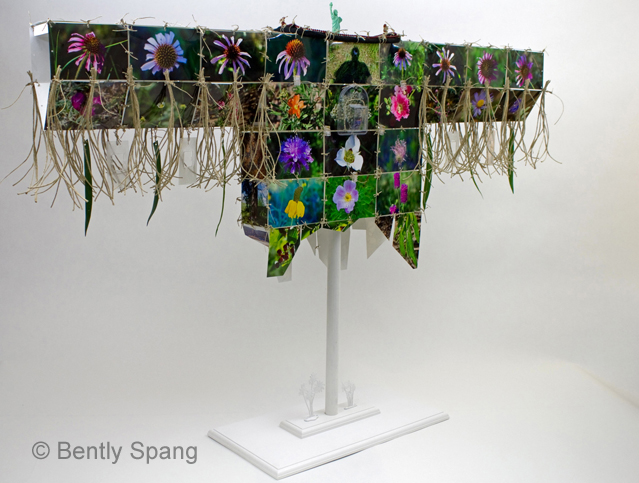
"Modern Warrior Series: National Sacrifice," Bently Spang, 2011, photos, hemp, misc. Collection Denver Art Museum
Now strip mining or surface mining, which devastates the top 100 feet of the earth, is at our doorstep just outside the boundaries of my homeland. And though we are a sovereign nation and our homeland is not subject to the ‘National Sacrifice’ mandate, the earth outside our doorstep is subject to the mandate and threats of coal development and it’s crushing physical and social toll loom large on our horizon. It’s presence just off the rez has also eroded our resolve to deny it access to our land, as is evidenced by a referendum vote in 2006 in my community that, for the first time ever, approved conducting a feasibility study concerning whether or not to pursue coal development; a clear shift in sentiment as all previous referendum votes coal development were soundly defeated. As I speak today, my nation’s leadership is in negotiations with 5 coal companies and the plot continues to thicken. In response to this newly emboldened threat of coal development, in 2011 I created a sculptural work that responds directly to this issue which I titled National Sacrifice. It was commissioned by, and is in the collection of, the Denver Art Museum. It calls attention to this issue, as well as to the incredible National Sacrifice my relatives in the past made so that future generations would have a homeland: a place where we could keep our people and our culture alive.
Every landscape we encountered during Artlab held echoes of my homeland. The cacti around Biosphere 2 were relatives of the prickly pear cactus on our land. I saw a nearly exact duplicate of the man sage plant my people use but it had no sage smell (curious…). The cedar varieties were similar but somewhat more varied. I discovered a close cousin to the plant we call Old Man Whiskers near Valer’s place and the ponderosa pine tree that covers our land, a close cousin of it stood like a group of old friends up the creek from Valer’s place. These, and many others, are plants we use in several ways in my community: as medicine, as food, and in the context of ceremony. Their uses were discovered by Indigenous scientists/practitioners and have been handed on through many generations of Tsistsistas up to today. When I go to other people’s forests I look for these plants, they give me a measure of comfort. They also remind me how intertwined and interdependent our ecosystems are and how, were it necessary, I could survive in just about any landscape.
I was gratified to see threads connecting my homeland to the Artlab landscapes and to realize that the complexity of I and my people’s experience with place, (both positive and negative) was mirrored in these landscapes. Each place we visited we were shown the layers of interaction there, the spectrum of human activity on that land—from the complete and utter decimation and exploitation of place to the complete nurturing of it. I saw that the passionate and gifted scientists and activists who presented their life’s work to us, though often differing in methodology and intent from my people, had the same level of curiosity and hunger for knowledge as the Indigenous scientist/practitioner had in the past and does have today about the natural world. Most importantly, I saw that, across the board, concern for the welfare of the earth was strong among the scientists and activists we met, so strong that people have devoted their lives to this end just as we have for centuries in the Native community. These realizations provided me with fresh insights into the scientific world and helped dispel my own misconceptions about that realm. They would also help temper the challenging moments of my Artlab experience.
As a Native person moving through the Artlab experience, wonderful though it was, inevitably difficult cultural issues arose for me. These are issues that are deeply imbedded in the land for me and my people and that arise from the countless layers of human interaction there, both good and bad. They are part of the history of this land yet are not often discussed at any length. I bring them up here not to reopen wounds or assign blame, but rather to foster a realistic, frank and ultimately beneficial discussion about the nature of place which includes an unflinching look at the past and present. Fearless discussions like this will not only help foster resolution of these difficult issues for both sides, a resolution that is long overdue, but it can also build trust and provide the strongest possible framework for change. And, only through such fearless discussions can we be assured that the best people and best possible solutions to climate change, and other issues of place, are reached. Certainly, in order to involve the Indigenous scientist/practitioner in finding solutions to climate change, which I believe is a crucial missing piece within the climate change efforts, this frank discussion must take place.
And while I am eternally grateful to the scientists for so selflessly sharing their life’s work with us during Artlab, I struggled with a cultural bias that is deeply ingrained in me and countless other Native people with regards to science. It is bias born out of a legacy of extremely difficult interactions—both older and more recent—between Native peoples and scientists It is a harsh historical reality that, unfortunately, resulted in genocidal acts towards my people in the name of science in the past (cranial studies and human remains, see here, [note the issues of NAGPRA and the border fence with Mexico]) , and much less severe but still unethical acts (biocolonialism, molecular colonialism, etc., see here ) that continue today. To be sure, the genocide of the past is, thankfully, a thing of the past, however the residue remains and new issues arise regularly. Today, both sides are working to rectify this situation, yet the challenges clearly remain (see here). And though this conflicted history had no direct correlation to any part of my Artlab experience, it is an undeniable, unresolved and intextricable part of my experience as a Native person.
The Native communities’ difficulties with the scientific community are, unfortunately, among the core elements that comprise the historical trauma/grief (see here) that has led to many of the unhealthy social issues we are dealing with in our communities today. The extreme hardships—genocide, broken treaties, boarding schools, etc.—Native peoples endured in the not so distant past in this country were unprecedented in Native history, therefore few cultural mechanisms were in place at the time of they occurred (ceremonies, etc.) to resolve them. With no means of resolution, the grief and trauma of these atrocities were handed on generationally to this day. Today, we are working hard to resolve this historical trauma/grief in our communities, drawing from the inherent flexibility of our cultural structures, the intellectual power of our cultural information, and the tenacity of our people to devise new strategies for survival. One example of this is the 1990 Native American Graves Protection and Repatriation Act (NAGPRA) mentioned in one of the links above, an act that one of my elders the late Bill Tallbull, Sr., among other brilliant Native leaders, was instrumental in passing. This act requires that museums who receive federal funding work with tribes to return to them human remains, sacred objects, and personal objects in their collections (see here).
As I mentioned earlier, my Artlab experience helped temper my cultural bias with regards to science. It helped me to understand that it is possible to bridge this chasm that exists between science and the Native community, but that it will take a concerted effort on both sides of the divide and a consistent dialogue between the two camps. Artlab provided me with unique and extremely valuable insights into the scientific community, both intellectually and on a human level. Sitting across the table from brilliant scientists and being given access to their significant spaces, being immersed in a transformed landscape with the tireless lady who helped foster that transformation, these experiences reminded me that there is a deep level of concern and compassion fueling the climate change movement today. It also gave me the opportunity to raise awareness of the centuries old existence of the Indigenous scientist/practitioner to the scientific and activist community, helping them to see the need for collaboration between the two groups. These are extremely rare opportunities for a Native person as we have rarely been included in a meaningful way as active participants in the climate change movement. Artlab, and programs like it, then are providing critical linkages between historically polarized groups—scientist, artist, Indigenous scientist, cultural worker, etc.—which will ensure a more comprehensive and consequently more beneficial dialogue and more effective action with regards to climate change.
The immersive nature of the Artlab experience helped me to understand even clearer the critical role of the Indigenous scientist/practitioner in the current matrix of climate change activity. These Native experts have always been, and continue to be, champions of protecting the environment. I have always seen the need for more Native involvement on numerous scientific fronts, yet had never been able to see firsthand the potential ‘fit’ between the two camps until I was ‘dunked’ in these new environs. Once dunked in the Artlab experience, then, I was gratified to see some of this fit already taking place.
As an example, I was not surprised to discover that the trincheras or atajadizos (also called check dams, see here p. 71) used in parts of the Cuenca Los Ojos project were of Indigenous origins. These are forms used for centuries by Indigenous peoples to sustain their way of life in a challenging landscape. Kudos to Cuenca Los Ojos for adopting their use and not wasting valuable time re-inventing the wheel. Just as this ancient technology is working today, so too do living Native peoples hold significant knowledge that could be extremely beneficial to understanding the earth. Combine this knowledge with the scientific communities studies, the expression of artists, and the efforts of activist groups and the potential is unmeasurable.
To be sure, there are many pressing issues in the Native community that are a higher priority than climate change: historical trauma, issues of sovereignty, teen suicide, to name but a few. The simple truth is, as Native people, we have always dealt with climate change issues: it is part and parcel of who we are. I am not a medicine person and so will not discuss details of ceremony, except to say that the earth and it’s well being are woven into our ceremonies and we renew the earth in this way, each and every year, for all human beings. Respect for the earth is also woven into the everyday protocols that govern our actions as individuals and we are taught to harvest from the earth in a balanced way. We will continue our climate change work irregardless, however that being said, the potential of combining western scientific and Native approaches toward a multi-pronged effort is an exciting prospect.
The Artlab experience continues to resonate in me and several possibilities for an artwork are rising to the surface. I have been compiling some of the extensive video footage I shot during the project into a possible multi-channel video installation. Also, I was recently invited to participate as a presenter and panelist at a Native climate change symposium called Echoes of the Earth,( http://buffalosfire.com/echoes-of-the-earth-indigenous-perspectives-on-art-and-climate-change-conference-in-bozeman-april-5-6/) and I will be presenting some of what occurred during the Artlab trip at this symposium.
As I mentioned to the scientists at Biosphere 2, I see our role as artists in this project as translators, passing on our version of what we have gleaned from their generously accessible presentations in our own visual language to our particular audiences.
As such, I work to devise the best possible translation of this experience to present to my Native community and the larger community as well. I also am interested in continuing the dialogue around possible Indigenous and western collaborations in curbing climate change. I applaud the organizers for their extraordinary efforts in bringing this project together and many thanks for including me as part of such a powerful group of artists.
Final thoughts. Still visible in my mind’s eye: Breathtaking—riding in John’s chevy van, an impossibly gorgeous sunset 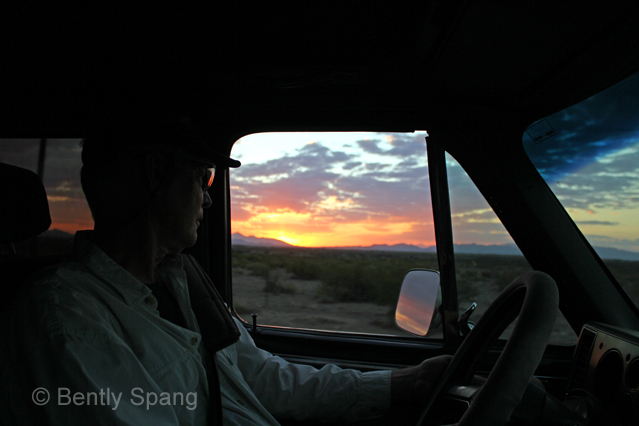 chasing us and Neil Young back from Mexico to Valer’s place; Unsettling—a hundred miles inside Arizona nowhere near a national border, the way-too-friendly, fresh-faced border patrol agent way-too-nicely interrogating us, “have a terrific day!” he said as we drove away; Exhilarating—almost dark, our guide, Jane and I race the cockroaches out of Biosphere 2, suddenly the lights shut down for the evening and it’s pitch black for a few seconds until my headlamp kicks in; Triumphant—1 o’clock in the morning, pitch black, finally seeing Jupiter and it’s moons through the telescope at Valer’s and me, Melo, David and his wife cheering and dancing around like kids in the middle of a horse pasture.
chasing us and Neil Young back from Mexico to Valer’s place; Unsettling—a hundred miles inside Arizona nowhere near a national border, the way-too-friendly, fresh-faced border patrol agent way-too-nicely interrogating us, “have a terrific day!” he said as we drove away; Exhilarating—almost dark, our guide, Jane and I race the cockroaches out of Biosphere 2, suddenly the lights shut down for the evening and it’s pitch black for a few seconds until my headlamp kicks in; Triumphant—1 o’clock in the morning, pitch black, finally seeing Jupiter and it’s moons through the telescope at Valer’s and me, Melo, David and his wife cheering and dancing around like kids in the middle of a horse pasture.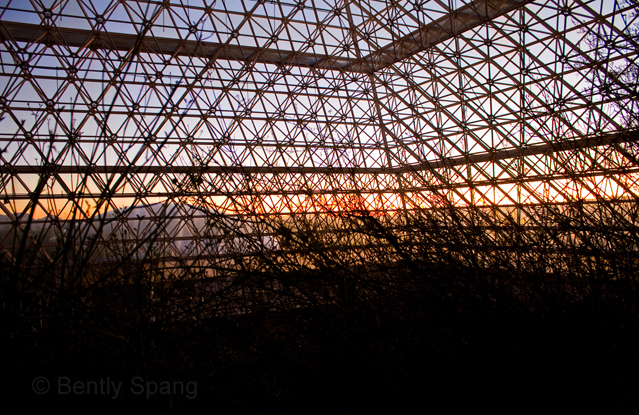

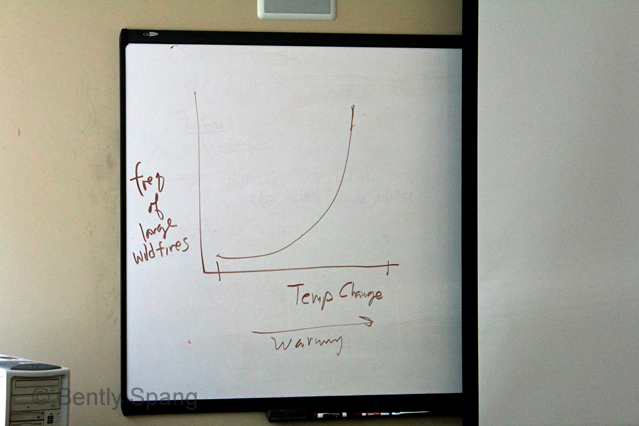
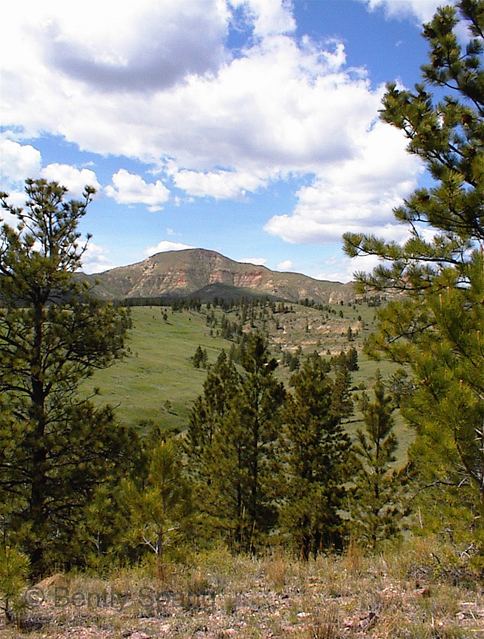
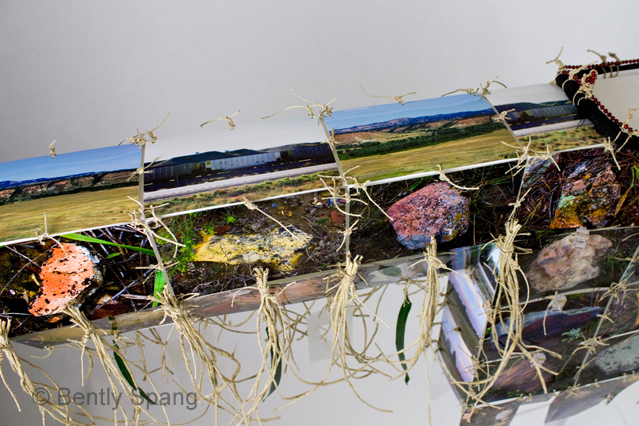
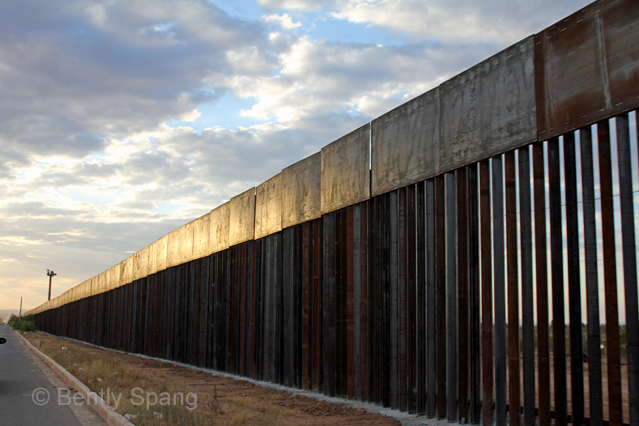
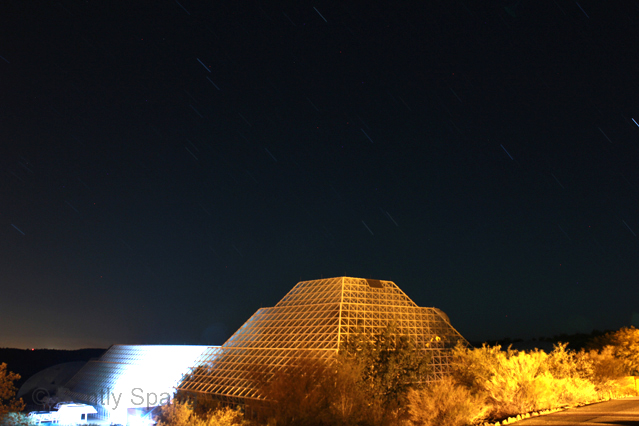
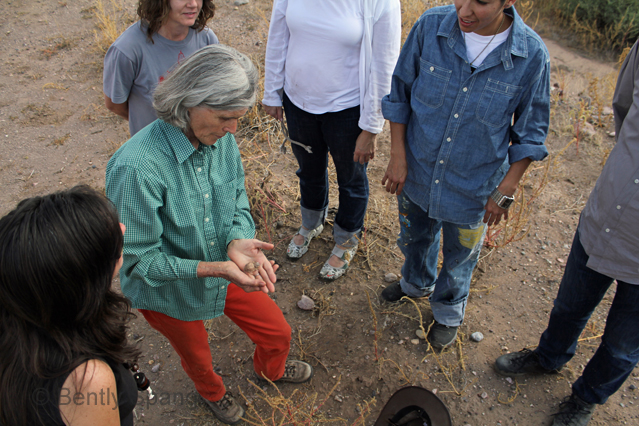
Bently,
Wow! Thank you for the many ideas and fantastic images to think about. It is so important to me and others that you took the time to share you perspective.
Are you still interested in the lung for an installation?
All the best,
Ellen
I love your photo’s Bently!!!
Hey Mel-
Thanks! I truly miss hanging with you and everyone, the composition of the group was hugely important and your enthusiasm was a definite spark for me. Hope you’re doing well!
Best,
Bently